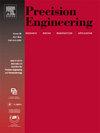Research on assembly performance prediction, optimal design, and adjustment methods for precision opto-mechanical system
IF 3.7
2区 工程技术
Q2 ENGINEERING, MANUFACTURING
Precision Engineering-Journal of the International Societies for Precision Engineering and Nanotechnology
Pub Date : 2025-03-25
DOI:10.1016/j.precisioneng.2025.03.026
引用次数: 0
Abstract
With the rapid development of optical technology, opto-mechanical systems are widely applied in space exploration, high-energy laser applications, and ultra-precision laser processing and measurement. The precise assembly of optical components is a key factor in ensuring the performance of opto-mechanical systems. Therefore, improving the assembly performance of optical systems has become one of the hot topics in optical research. The research on the assembly performance of existing opto-mechanical systems primarily emphasizes predictive model construction, optimization of structural stiffness, assembly process planning, and automation equipment development. These studies typically address only one or a few specific issues and lack a systematic review of the overall development status and technical interrelations of high-performance assembly technologies for opto-mechanical systems. Moreover, technology that integrates “design, assembly, measurement, and adjustment” to enhance optomechanical systems has yet to be developed. Centered on two key performance metrics of opto-mechanical systems—pointing accuracy and surface distortion, this paper reviews the theoretical frameworks and technical progress of related predictive models, addressing three aspects: current research status, error analysis, and quantitative performance description methods. Secondly, from the perspectives of optimization design and adjusting processes, this paper summarizes the main technical approaches for improving optical performance, comparing, and applying deterministic and uncertainty optimization methods for optical system error factors, and analyzes their applicability and limitations. Subsequently, this paper focuses on the development status of intelligent assembly and adjustment technologies and analyzes their role in improving assembly accuracy from two aspects: assembly processes and assembly equipment. Finally, this paper concludes by summarizing the findings and envisioning future directions, offering a clear learning pathway for novices in the field of opto-mechanical system performance research, presenting specialists with perspectives on key technologies and avenues for further exploration, and providing a valuable reference for practical engineering applications and future studies, facilitating new technological breakthroughs and theoretical advancements.
精密光机系统装配性能预测、优化设计与调整方法研究
随着光学技术的飞速发展,光机械系统在空间探测、高能激光应用、超精密激光加工与测量等领域得到了广泛的应用。光学元件的精确装配是保证光机械系统性能的关键因素。因此,提高光学系统的装配性能已成为光学研究的热点之一。对现有光机械系统装配性能的研究主要侧重于预测模型的建立、结构刚度的优化、装配工艺的规划和自动化设备的开发。这些研究通常只涉及一个或几个具体问题,缺乏对光机械系统高性能装配技术整体发展状况和技术相互关系的系统回顾。此外,集成“设计、装配、测量和调整”以增强光机械系统的技术尚未开发。本文围绕光机械系统的两个关键性能指标——指向精度和表面畸变,综述了相关预测模型的理论框架和技术进展,从研究现状、误差分析和性能定量描述方法三个方面进行了阐述。其次,从优化设计和调整过程的角度,总结了提高光学性能的主要技术途径,对光学系统误差因子的确定性和不确定性优化方法进行了比较和应用,并分析了其适用性和局限性。随后,本文重点介绍了智能装配与调整技术的发展现状,并从装配工艺和装配设备两个方面分析了智能装配与调整技术对提高装配精度的作用。最后,本文总结了研究成果并展望了未来的发展方向,为光机械系统性能研究领域的新手提供了清晰的学习路径,为专家提供了关键技术的观点和进一步探索的途径,为实际工程应用和未来的研究提供了有价值的参考,促进了新的技术突破和理论发展。
本文章由计算机程序翻译,如有差异,请以英文原文为准。
求助全文
约1分钟内获得全文
求助全文
来源期刊
CiteScore
7.40
自引率
5.60%
发文量
177
审稿时长
46 days
期刊介绍:
Precision Engineering - Journal of the International Societies for Precision Engineering and Nanotechnology is devoted to the multidisciplinary study and practice of high accuracy engineering, metrology, and manufacturing. The journal takes an integrated approach to all subjects related to research, design, manufacture, performance validation, and application of high precision machines, instruments, and components, including fundamental and applied research and development in manufacturing processes, fabrication technology, and advanced measurement science. The scope includes precision-engineered systems and supporting metrology over the full range of length scales, from atom-based nanotechnology and advanced lithographic technology to large-scale systems, including optical and radio telescopes and macrometrology.

 求助内容:
求助内容: 应助结果提醒方式:
应助结果提醒方式:


